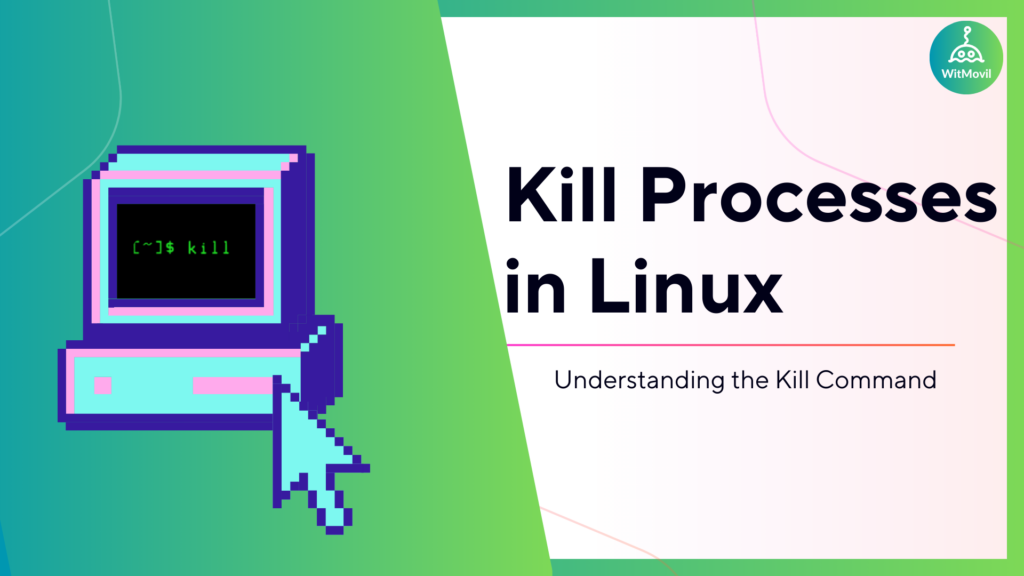When managing a Linux system, it’s essential to understand how processes work and how to effectively manage them. Sometimes, you may need to kill a process that’s consuming too many resources, is unresponsive, or no longer needed. This tutorial will guide you through the concept of processes in Linux and show you different methods for killing a process, depending on your needs.
What is a Process in Linux?
In Linux, a process is an instance of a running program. Each process has its own memory space, resources, and an ID known as the Process ID (PID). Processes are essential to system operations, as they execute commands, run applications, and perform tasks in the background. Linux allows you to manage these processes using various tools and commands.
What is Killing a Process in Linux?
Killing a process in Linux refers to terminating or stopping a running process. This is useful when a process is hanging, consuming excessive CPU resources, or needs to be stopped for any other reason. Killing a process ensures that it no longer uses system resources and allows the system to continue functioning properly.
Reasons to Kill or Terminate a Process in Linux
There are several reasons you might need to kill a process in Linux:
- Unresponsive applications: Sometimes, an application may freeze or become unresponsive.
- High resource consumption: Some processes may consume too much CPU or memory, affecting system performance.
- System maintenance: You may need to stop a service or application to update or restart it.
- Security concerns: If a malicious or unauthorized process is detected, killing it ensures system security.
How to Kill a Process in Linux
To kill a process, you need to identify it and choose the appropriate method. The most common methods are using the kill, pkill, and killall commands. Below are the steps for each method.
How to Kill a Process Using the kill Command With a PID
- Find the PID of the process:
Use thepsortopcommand to find the PID of the process you want to kill:
ps aux | grep <process-name>This will display a list of processes. Locate the process and note the PID.
- Kill the process:
Once you have the PID, use thekillcommand:
kill <PID>If the process doesn’t terminate immediately, you can force kill it with the -9 option:
kill -9 <PID>How to Kill Multiple Processes
To kill multiple processes at once, use the kill command with a list of PIDs:
kill <PID1> <PID2> <PID3>You can also use the pkill or killall command to kill multiple processes by name, as shown later.
How to Kill a Process Using the pkill Command
The pkill command allows you to kill processes based on their name, user, or other attributes. For example, to kill all processes named firefox, run:
pkill firefoxTo force kill the process, add the -9 option:
pkill -9 firefoxHow to Kill a Process Using the killall Command
The killall command terminates all processes that match the specified name. For example, to kill all instances of firefox, run:
killall firefoxSimilar to pkill, you can use killall -9 to force kill processes.
How to Kill Process in Linux by User
If you want to kill all processes owned by a specific user, you can use the pkill command with the -u option:
pkill -u <username>This will terminate all processes belonging to the specified user.
How to Kill a Process in Linux by Name
To kill a process by its name, use the pkill or killall command. For example, to stop a process named chrome, use:
pkill chromeOr:
killall chromeHow to Kill a Process in Linux with Bash Script
You can automate the process of killing unwanted processes with a Bash script. Here’s an example script that kills a process by name:
#!/bin/bash
process_name=$1
pid=$(pgrep $process_name)
if [ -z "$pid" ]; then
echo "Process not found."
else
kill -9 $pid
echo "$process_name has been terminated."
fiTo run this script, save it as kill_process.sh and execute it with:
./kill_process.sh <process-name>Wrapping Up
Knowing how to kill processes in Linux is essential for system administrators and users alike. By using commands like kill, pkill, and killall, you can easily manage processes, terminate unresponsive applications, and free up system resources. Always be careful when killing processes, as terminating essential system processes can cause instability.
FAQs on Killing Linux Processes
How do you kill unnecessary processes in Linux?
Use the ps or top command to find unnecessary processes, then kill them using kill, pkill, or killall.
What command can you use to kill a process?
You can use the kill, pkill, or killall commands to kill processes in Linux.
How do you find the killed process in Linux?
Once a process is killed, it is no longer running. Use ps or top to verify if it is still active.
How do I gracefully shut down a process in Linux?
You can send a graceful termination signal using kill -15 <PID>, which allows the process to close cleanly.
How do you end a process by keystroke?
Press Ctrl+C to terminate a running process in the terminal.
How do you abort a run in Linux?
Press Ctrl+C to abort a running command in the terminal.
Which key is used to cancel a process?
The Ctrl+C keystroke is used to cancel a running process in Linux.
How do I kill a high CPU process in Linux?
Identify the process using top or htop, then kill it with kill -9 <PID> if necessary.
Meta description: Learn how to kill processes in Linux with this step-by-step guide. Explore commands like kill, pkill, and killall to manage your server efficiently.



